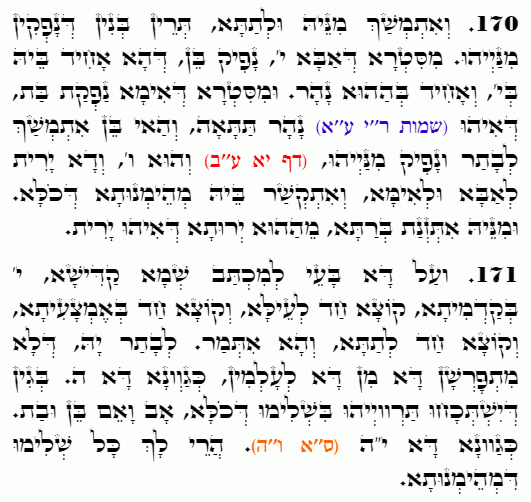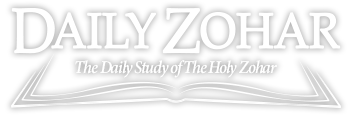Daily Zohar # 4515 – Vayikra – Father and Mother, son and daughter
Daily Zohar 4515

Hebrew translation:
171. וְלָכֵן צָרִיךְ לִכְתֹּב אֶת הַשֵּׁם הַקָּדוֹשׁ – י’ בָּרִאשׁוֹנָה, קוֹץ אֶחָד לְמַעְלָה, וְקוֹץ אֶחָד בָּאֶמְצַע, וְקוֹץ אֶחָד לְמַטָּה, וַהֲרֵי נִתְבָּאֵר. אַחַר כָּךְ יָהּ, שֶׁאֵין נִפְרָדִים זֶה מִזּוֹ לְעוֹלָמִים. כְּמוֹ כֵן ה, כְּדֵי שֶׁיִּמָּצְאוּ שְׁנֵיהֶם בִּשְׁלֵמוּת הַכֹּל, אָב וָאֵם בֵּן וּבַת. כְּמוֹ כֵן י”ה(ו”ה). הֲרֵי לְךָ כָּל שְׁלֵמוּת הָאֱמוּנָה.
.
Zohar Vayikra
Continued from previous DZ
#170
From the ה Heh that represents Israel Saba and Tevuna, two children emerge from them. From the lower father, the Yod, in the corner angle of the ה Heh, a son emerges, Zeir Anpin, and he holds the Yod, which is Israel Saba, called father. He holds to the river that is Tevunah, called Mother. She is the essence of the Heh that extends from the Yod. From the side of the mother emerges a daughter, Malchut, called the lower river. The son, Zeir Anpin, emerges from Israel Saba and Tevunah, and it is the Vav of the YHVH. He inherits the Mochin from the father and mother, Israel Saba and Tevuna. From him and the inherited Mochin, the daughter is nourished and illuminated.
#171
Therefore, writing the Holy Name with Yod first is necessary. One needs to write one thorn above the Yod, one thorn in the middle of the Yod, and one thorn at the bottom of the Yod. This represents Chokmah, Binah, and Da’at, as hinted at in the Yod. Afterwards, one needs to write יה Yah, which are never separated from each other. First is writing the Yod in the corner angle and then drawing from it two lines, one for the top of the letter, and one downwards to the right foot, then a broken line for the left foot. So that both are found in a complete state, Father and Mother, included in the Yod, which is the supernal Father and Mother. Then the Yod brings out the milui (Spelling) of Vav-Dalet that shapes the letter ה Heh which are son and daughter, of the Yod because the Vav-Dalet represent Zeir Anpin and Malchut included in Chokhmah (as mentioned earlier). The יה YH should be written in this manner to have the complete faith, Emunah, יה YH and וה VH, YHVH.
{||}

 Previous: Vayikra
Previous: Vayikra

